Now, I invite you all to join me in exploring great landmarks, places that may be gone.
1. Eiffel Tower
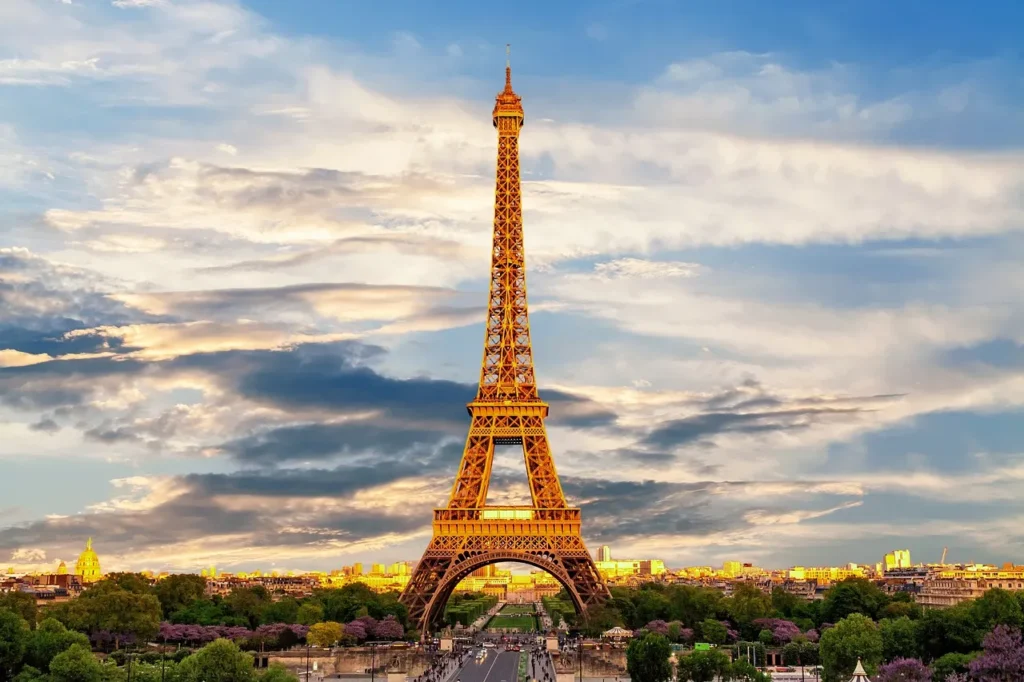
The Eiffel Tower, a global cultural icon, was once considered a strange and ugly structure. The original plan of the French was to dismantle it after 20 years and sell it for scrap.
Gustave Eiffel, its creator, faced opposition and did everything he could to prevent the demise of his beloved creation.
However, he later worked with scientists to explore the Eiffel Tower’s potential. It was transformed into a wireless telegraph station, a meteorological observation post, and a physics laboratory.
These purposes kept the Eiffel Tower standing for a long time as human aesthetic tastes evolved.
However, the Eiffel Tower is now facing corrosion problems. The iron surface, exposed to air and water, is gradually oxidizing.
Every seven years, about 60 million euros and 60 tons of paint are spent to prevent the corrosion process.
However, according to experts, rust has prevailed and only 10% of the paint surface remains intact. In addition, small movements caused by wind and temperature changes weaken the tower in the long run.
Although the tower won’t collapse this year or next, experts warn that without a major renovation within the next 15 years, France could lose this iconic symbol.
Finally, there’s another strange tale associated with the Eiffel Tower. Erika Eiffel, who claimed to have married the Eiffel Tower in 2000, was once the head of an organization made up of objectophiles, people who have romantic feelings for inanimate objects.
Before that, she had two relationships, one with a bow and later with the Berlin Wall.
2. Great Wall of China
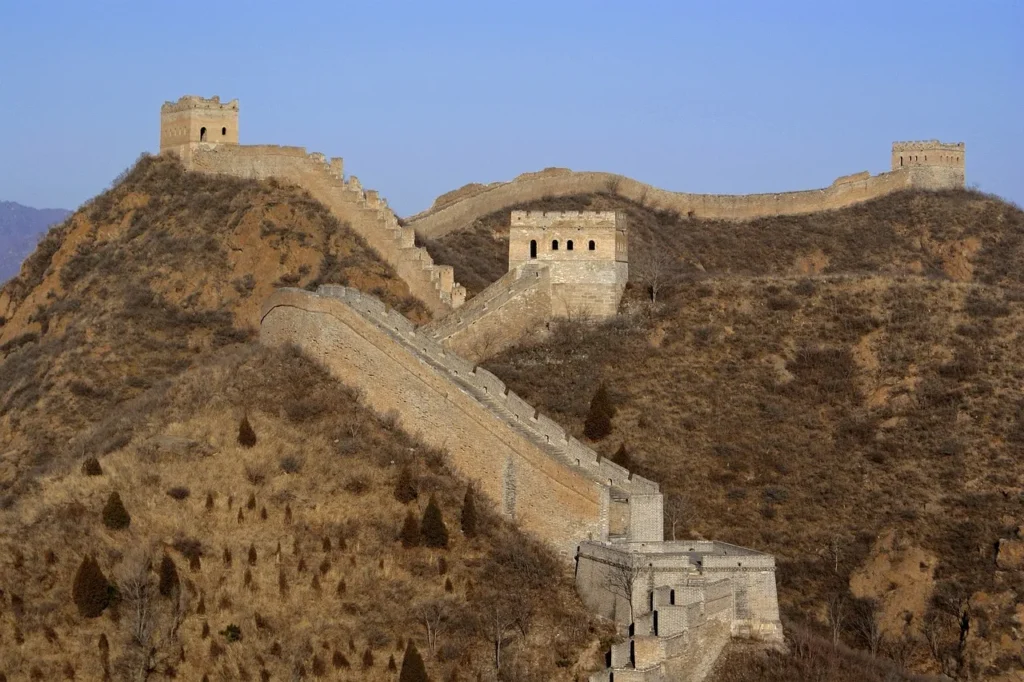
The Great Wall of China, also known as the Wall of Ten Thousand Li or simply the Great Wall, is an incredible architectural marvel that originated in China.
It is one of the longest man-made structures and has a value beyond mere admiration. With a total length of approximately 21,196 kilometers, the Great Wall exceeds its name many times over.
Built beginning in the 7th century BC and later connected by Emperor Qin Shi Huang, the Great Wall is best known for the sections built during the Ming Dynasty from the 14th to the 17th century.
The last section of the wall was built in 1878 during the Qing Dynasty. However, the Great Wall of China is in danger of disappearing. Nearly 30% of its length, especially the sections built during the Ming Dynasty, has disappeared due to natural erosion.
Weather elements such as wind and water have caused the soil and stone to break down, resulting in the loss of more than 2,000 kilometers of the wall.
The area of Cam Tuc province, which has over 60 kilometers of the wall, is predicted to disappear within the next 25 years because this particular section was built with mud instead of bricks and is prone to erosion from sandstorms. Many sections of the wall have also been eroded from over 5 meters high to less than 2 meters.
Mother Nature may take thousands of years to completely erase the Great Wall of China, while man can do better to protect this remarkable structure.
Furthermore, stealing bricks, stones, or vandalizing the walls of the Great Wall is considered a violation and can result in a fine of up to 5,000 yuan, or about $720, according to.
3. Statue of Liberty
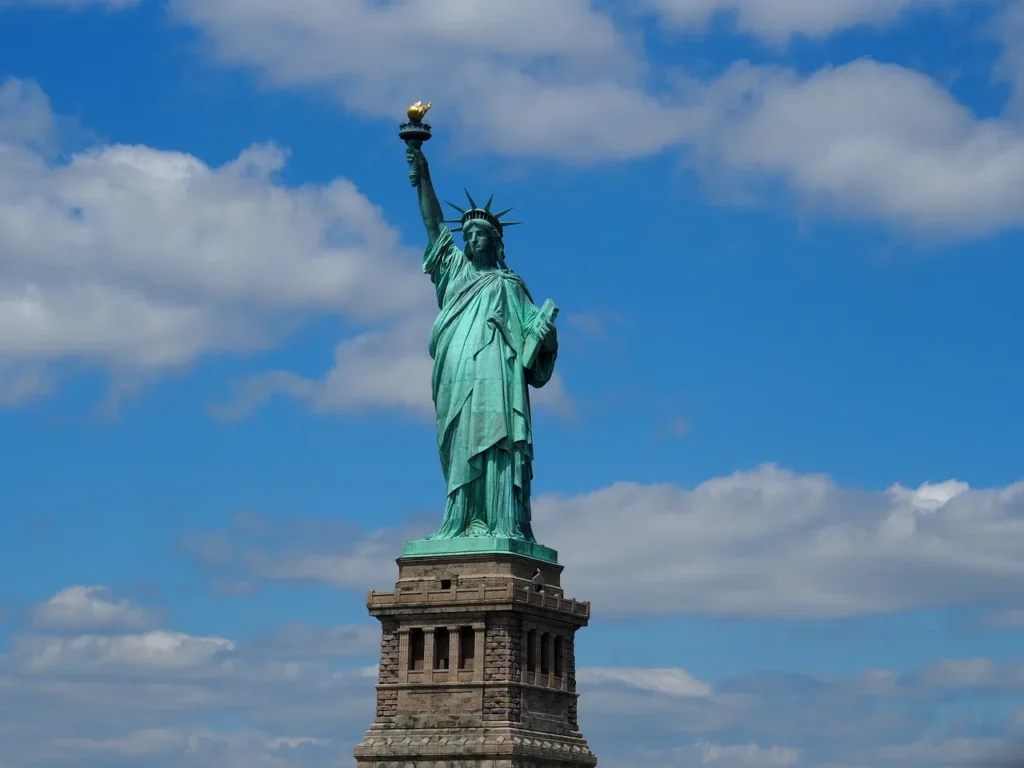
The Statue of Liberty is one of the world’s most recognizable icons. Standing at a height of approximately 300 feet, the Statue of Liberty is located on Liberty Island off the coast of New York City, USA. However, due to climate change, the Statue of Liberty is at risk of being submerged. Rising sea levels and more intense storms have put this iconic statue at risk.
In 2012, Superstorm Sandy caused flooding on the island where the Statue of Liberty stands, and the statue had to be shut down for nearly 8 months for renovations.
In addition, the Statue of Liberty is regularly battered by waves or buried by sand. The United Nations Intergovernmental Panel on Climate Change estimates that sea levels could rise 0.5 to 1 meter by 2099.
While this figure may not directly submerge the Statue of Liberty, the prolonged impact and continued rise of sea levels could lead to more significant damage, especially in the face of future superstorms.
There is a possibility that the Statue of Liberty could be toppled and become a poignant symbol of the freedom of the United States.
4. Leaning Tower of Pisa
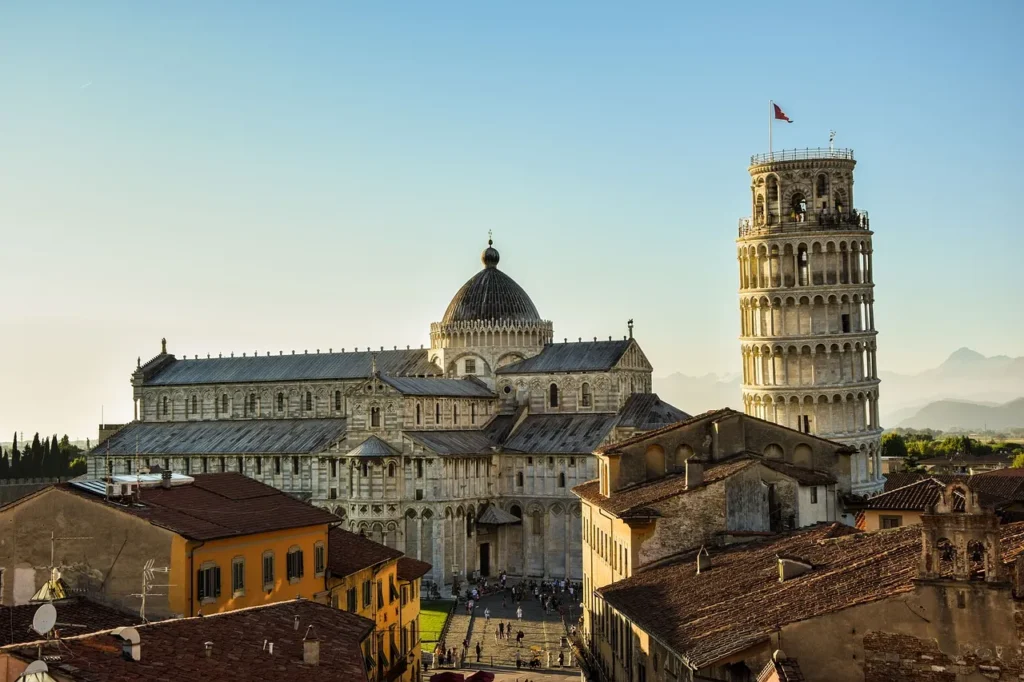
The Leaning Tower of Pisa is a famous structure located in the city of Pisa, Italy. Construction of the tower began in 1173, and from the time it was built, it began to lean as far as the second floor due to weak ground and inadequate foundations.
Rather than tear it down and rebuild, the builders continued to construct the upper floors with one side higher than the other to compensate for the tilt.
After many setbacks and repairs over nearly two centuries, the tower was completed in 1372 with a tilt of approximately 1.6 degrees.
The Leaning Tower of Pisa has survived numerous major earthquakes since 1281. Research has shown that the weakness of the ground was the initial cause of the Tower’s leaning, but it also served as a factor in stabilizing the Tower after the earthquakes.
Engineers have taken various measures to reduce the tower’s tilt, including excavating tunnels and removing soil from the north side. Currently, the Leaning Tower of Pisa tilts at an angle of approximately 3.99 degrees.
While many experts are optimistic that the Tower will continue to tilt steadily for at least another 200 years, this stability could be lost at any time.
As a result, the city of Pisa has taken prudent measures to protect the Tower, including not ringing the bells to avoid the effects of gravity and limiting the number of visitors who can climb the Tower at the same time.
This ensures that the Leaning Tower of Pisa can continue to exist and remain a famous tourist attraction, attracting visitors from all over the world.
5. Stonehenge
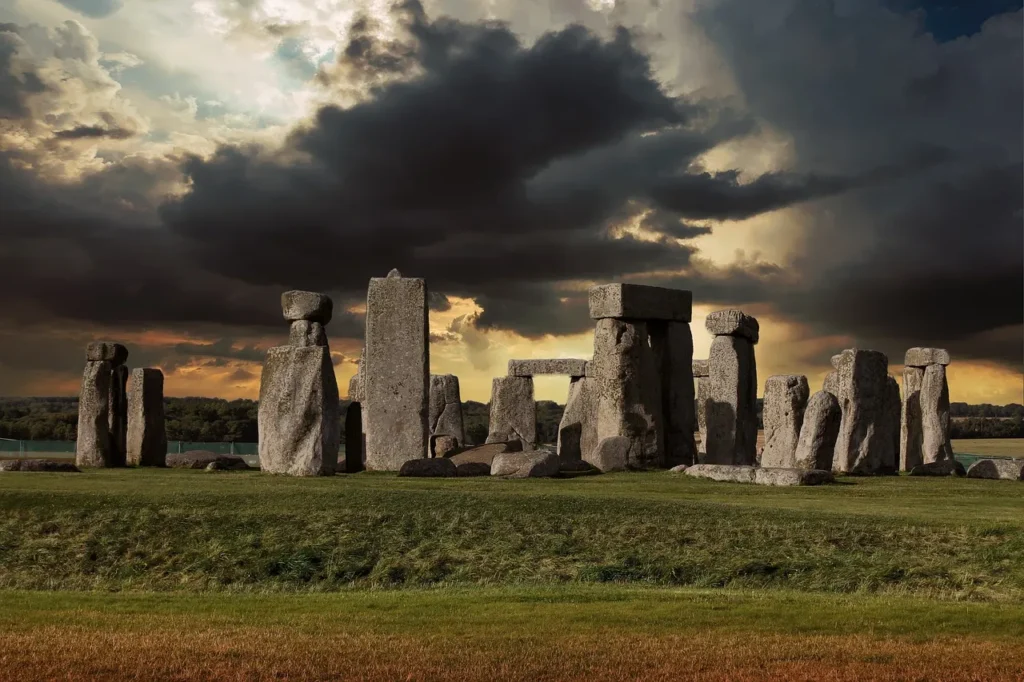
Stonehenge is a stone structure in England that was built approximately 4,000 to 5,000 years ago. The structure is made of sarsen stone, a type of stone that is highly resistant to erosion, allowing it to survive for millions of years.
However, Stonehenge is in danger of being damaged in the near future when a $2.3 billion tunnel project is built underneath it.
This tunnel is planned to run under the A303 road, a major route between London and the southwest of England. Currently, the A303 is one of the most congested roads in the UK.
The UK government has proposed to widen the A303 by building a 3.3 km tunnel under the existing road, approximately 40 m underground.
The aim is to reduce noise and air pollution, restore a tranquil environment, and ease congestion.
However, this project could potentially harm the Stonehenge site by affecting the underlying ground. The Stonehenge site is known to be rich in Neolithic artifacts, many of which have yet to be discovered.
Tunnel boring machines could disturb this delicate structure and cause subsidence. In addition, the Stonehenge area contains layers of weak and unstable chalk with numerous cracks and cavities.
Changes in groundwater levels could reduce the stability of the ground and cause the tunnels to collapse, expanding the voids underground and causing subsidence.
The formation of a 5-meter subsidence near Stonehenge following the tunneling of the high-speed rail project in a similar area of Beijing has raised concerns about a similar occurrence during the tunnel extension above Stonehenge.
In a worst-case scenario, the subsidence could spread and threaten the existence of this 4,000-year-old wonder.
